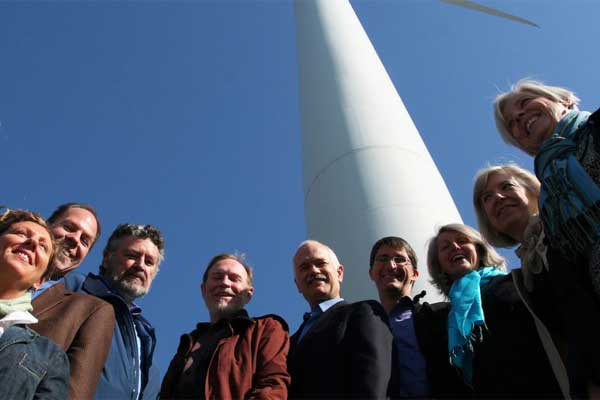The truth is much more complicated, with the prices paid to kick-start a transition to green energy in this province playing a much smaller role in driving cost increases than enormously expensive nuclear reactor rebuilds and the billions spent on repairing our aging power transmission system.
What also gets overlooked are the huge benefits we have reaped by investing in renewable power. Economic modelling done for TREC Renewable Energy Co-operative found that for every dollar spent through the province’s Feed-in Tariff system, the average large rooftop solar system generated an additional $1.45 in economic activity. When you factor in things like wages paid by suppliers and returns paid to community investors that are spent in the community, this jumps to over $2.
Equally importantly, our economic analysis found that when capital came from local investors and local firms were used to develop the project, the economic impact on the local economy increased by 47% compared to a project without these local components.
That’s where the value of a community approach really shines. The 24 member co-ops of the Federation of Community Power Co-operatives have raised more than $84 million from members – average citizens who see renewable energy as an investment that aligns with their values and a way to keep investment dollars in their community. These funds have been invested in hundreds of local green energy projects all around the province.
When they are invested in community-based projects, FIT payments do more than pay for emissions free power. The Toronto District School Board, for example, is installing solar systems on more than 300 schools. These systems will provide enough power to meet about 15% of the board’s electricity needs and pay for 70% of its huge backlog of roof repairs.
In Ottawa, non-profit housing providers and two school boards are using their roof space to generate power in co-operation with the Ottawa Renewable Energy Co-operative. Again, everybody wins with local investors providing the capital to build clean power systems that pay important dividends for their community hosts.
The community power sector also offers an important jobs advantage: The Institute for Local Self Reliance has found that community-owned renewable energy projects generally create twice as many jobs as corporately owned projects.
Similarly, almost all community power projects are “locally embedded” – they feed their power directly into local power grids rather than requiring it to be transported long distances. This makes our local power systems more resilient in the face of increasingly severe weather brought about by climate change and reduces the need for costly transmission system additions.
Far from being a drain on our economy, Ontario’s investment in green energy is helping this province to grab a piece of one of the world’s fastest growing industries. We estimate that the community power sector will drive more than $5 billion in economic activity in Ontario over the life of the current FIT contracts and if the sector expands through renewed government commitment, it will drive so much more.
A report by the respected Rocky Mountain Institute noted that “Community-scale solar is at a sweet spot between utility-scale and behind-the-meter solar. It is neither too big nor too small; it is just the right size to capture community and distributed energy benefits on one hand and utility-scale solar’s economies of scale on the other.”
As more and more investors look to move their money out of climate destabilizing fossil fuels and into clean energy, getting more bang for our buck by putting these dollars into community-owned power projects just makes sense. It is critical the Ontario government and elected representatives understand this potential and continue to stand behind effective policies like the Feed-In Tariff Program for community groups.
Article written by Judith Lipp, the Executive Director of TREC. Read the report here.















Comments